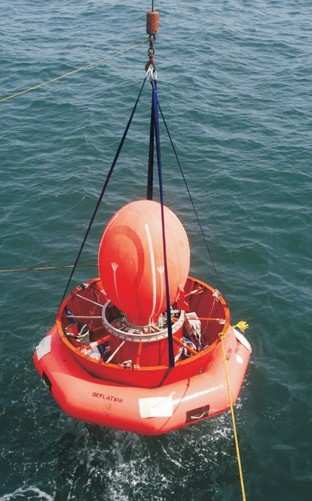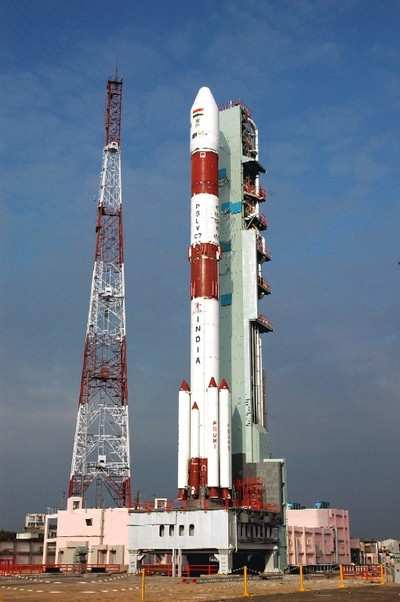Tue, Jan 23, 2007
Major Milestone For Country's Manned Space Program
India's Space Research Organization (ISRO) announced Monday it
has safely deorbited and recovered a capsule launched on January 10
from a facility north of the city of Chennai. The capsule was one
of four payloads aboard the rocket and was part of an effort by the
country to develop a manned spaceflight program.

The 1,210 pound Space Capsule Recovery Experiment (SRE) spent 11
days in orbit before splashing down in the Bay of Bengal yesterday.
(The above picture was taken during capsule recovery testing --
it's not from the actual SRE recovery).
A. Subramoniam, head of the team that designed and built the
capsule at ISRO, told the Sydney Morning Herald, "[It] landed in
the Bay of Bengal ... as per schedule. The mission is a great
success [and] a stepping stone to design and build our very own
reusable spacecraft, and eventually [carry out] manned missions
into space, too."
India's space agency has built and orbited communications
and remote-sensing satellites for years, but this mission marks a
first attempt at deploying a reusable spacecraft.
India's home-grown Polar Satellite Launch Vehicle --
dubbed PSLV-C7 -- carried the capsule aloft along with an
Indian mapping satellite, an Indonesian earth observation satellite
and an Argentinian educational satellite. The four objects were
lifted to a 395-mile polar orbit.

PSLV is ISRO's workhorse launch vehicle. It's a four-stage
rocket using a combination of solid and liquid propellants with a
total lift-off weight of nearly 300 tons. The agency boasts eight
consecutive successful launches with the booster since it
started service in 1994.
The SRE, whose primary mission was to aid India in developing
re-entry procedures and recoverable/reusable space technologies,
also carried two microgravity experiments into space and back to
earth.
Although ISRO officials say the country won't likely put an
astronaut in space before 2014, it says Monday's success will help
the country in its preparations for a 2008 unmanned moon
mission.
More News
From 2023 (YouTube Version): Legacy of a Titan Robert (Bob) Anderson Hoover was a fighter pilot, test pilot, flight instructor, and air show superstar. More so, Bob Hoover was an i>[...]
Get The Latest in Aviation News NOW on Instagram Are you on Instagram yet? It's been around for a few years, quietly picking up traction mostly thanks to everybody's new obsession >[...]
Aero Linx: B-52H Stratofortress The B-52H Stratofortress is a long-range, heavy bomber that can perform a variety of missions. The bomber is capable of flying at high subsonic spee>[...]
Altimeter Setting The barometric pressure reading used to adjust a pressure altimeter for variations in existing atmospheric pressure or to the standard altimeter setting (29.92).>[...]
"Knowing that we play an active part in bettering people's lives is extremely rewarding. My team and I are very thankful for the opportunity to be here and to help in any way we ca>[...]
 Classic Aero-TV: Remembering Bob Hoover
Classic Aero-TV: Remembering Bob Hoover ANN FAQ: Follow Us On Instagram!
ANN FAQ: Follow Us On Instagram! ANN's Daily Aero-Linx (05.15.24)
ANN's Daily Aero-Linx (05.15.24) ANN's Daily Aero-Term (05.15.24):Altimeter Setting
ANN's Daily Aero-Term (05.15.24):Altimeter Setting Aero-News: Quote of the Day (05.16.24)
Aero-News: Quote of the Day (05.16.24)




